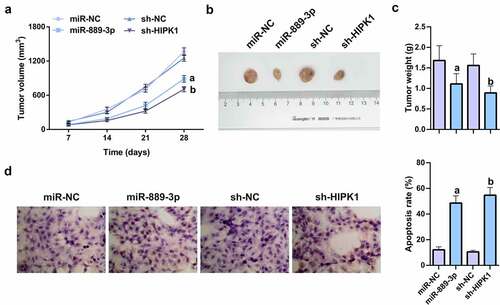Figures & data
Table 1. Primer sequences
Table 2. Depression of miR-889-3p is associated with LNM and clinicopathological stage
Figure 1. Knockdown of miR-889-3p is manifested in LC tissues and cell lines

Figure 2. MiR-889-3p represses the proliferation and EMT of LC cells
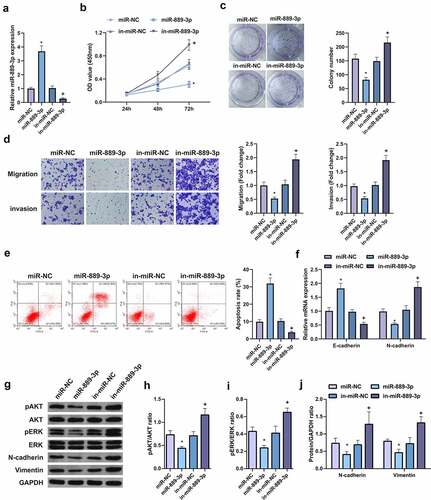
Figure 3. HIPK1 is sponged via miR-889-3p
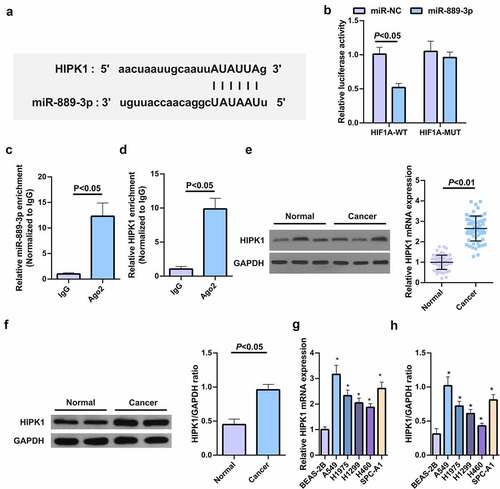
Figure 4. HIPK1 depletion inhibits the proliferation and EMT of LC cells
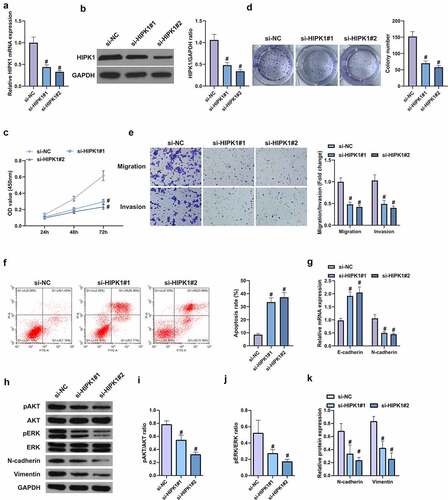
Figure 5. HIPK1 overexpression motivates the growth and metastasis of LC cells
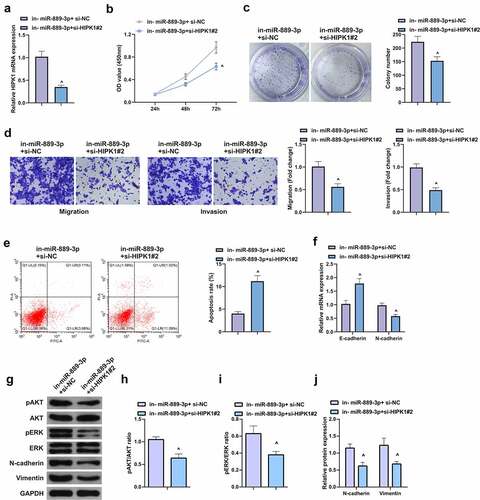
Figure 6. HIPK1-mediating miR-889-3p takes part in LC cell proliferation and EMT
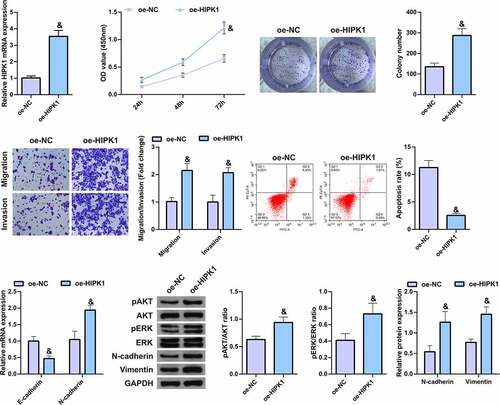
Figure 7. MiR-889-3p upregulation or HIPK1 knockdown represses tumor growth in vivo.
